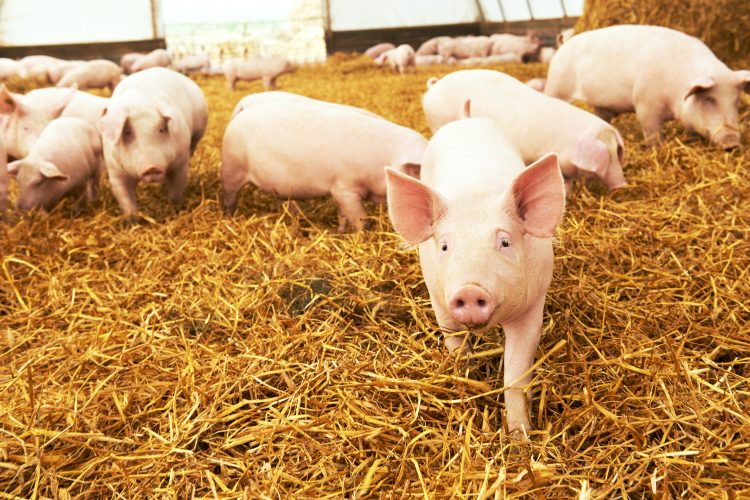Intensive farming behind antibiotic-resistant MRSA, say researchers
- Like
- Digg
- Del
- Tumblr
- VKontakte
- Buffer
- Love This
- Odnoklassniki
- Meneame
- Blogger
- Amazon
- Yahoo Mail
- Gmail
- AOL
- Newsvine
- HackerNews
- Evernote
- MySpace
- Mail.ru
- Viadeo
- Line
- Comments
- Yummly
- SMS
- Viber
- Telegram
- Subscribe
- Skype
- Facebook Messenger
- Kakao
- LiveJournal
- Yammer
- Edgar
- Fintel
- Mix
- Instapaper
- Copy Link
Posted: 28 June 2022 | New Food | No comments yet
High use of antibiotics on pig farms is believed to be behind the emergence of the dangerous superbug, which the WHO has called a major threat to human health.


Pig farms in particular are responsible for MRSA spread
A new study has found that a highly antibiotic-resistant strain of the superbug MRSA – methicillin resistant Staphylococcus aureus – has emerged in livestock in the last 50 years, probably due to widespread antibiotic use in pig farming.
The strain, called CC398, has become the dominant type of MRSA in European livestock in the past fifty years. It is also a growing cause of human MRSA infections.
The study found that CC398 has maintained its antibiotic resistance over decades in pigs and other livestock. And it is capable of rapidly adapting to human hosts while maintaining this antibiotic resistance.
The results highlight the potential threat that this strain of MRSA poses to public health. It has been associated with increasing numbers of human infections, in people who have and have not had direct contact with livestock.
“Historically high levels of antibiotic use may have led to the evolution of this highly antibiotic resistant strain of MRSA on pig farms,” said Dr Gemma Murray, a lead author of the study, previously in the University of Cambridge’s Department of Veterinary Medicine and now at the Wellcome Sanger Institute.
She added: “We found that the antibiotic resistance in this livestock-associated MRSA is extremely stable – it has persisted over several decades, and also as the bacteria has spread across different livestock species.”
Antibiotic use in European livestock is much lower than it has been in the past. But the researchers say that ongoing reductions in antibiotic use on pig farms – due to recent policy changes – are likely to have a limited impact on the presence of this strain of MRSA in pigs because it is so stable.
While livestock-associated CC398 is found across a broad range of livestock species, it is most commonly associated with pigs. Its rise has been particularly evident in Danish pig farms where the proportion of MRSA-positive herds has increased from less than five percent in 2008 to 90 percent in 2018. MRSA doesn’t cause disease in pigs.
“Understanding the emergence and success of CC398 in European livestock – and its capacity to infect humans – is vitally important in managing the risk it poses to public health,” said Dr Lucy Weinert in the University of Cambridge’s Department of Veterinary Medicine, senior author of the paper.
“Cases of livestock-associated MRSA in humans are still only a small fraction of all MRSA cases in human populations, but the fact that they’re increasing is a worrying sign.”
The researchers say that intensification of farming, combined with high levels of antibiotic use in livestock, has led to particular concerns about livestock as reservoirs of antibiotic-resistant human infections.
Zinc oxide has been used for many years on pig farms to prevent diarrhoea in piglets. Due to concerns about its environmental impact and its potential promotion of antibiotic resistance in livestock, the European Union will ban its use from this month. But the authors say this ban may not help reduce the prevalence of CC398 because the genes conferring antibiotic resistance are not always linked to the genes that confer resistance to zinc treatment.
MRSA was first identified in human patients in 1960. Due to its resistance to antibiotics it is much harder to treat than other bacterial infections. The World Health Organisation now considers MRSA one of the world’s greatest threats to human health.







